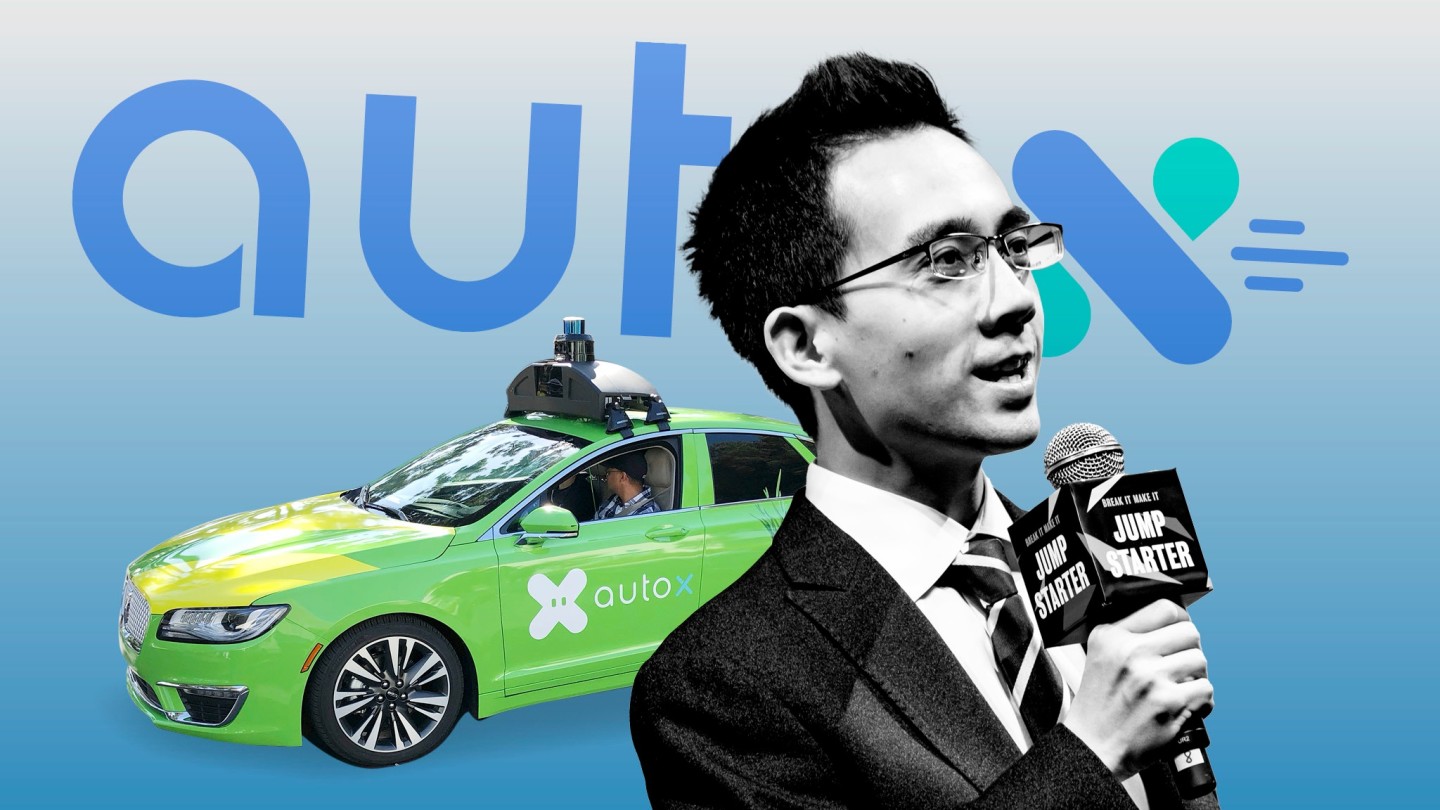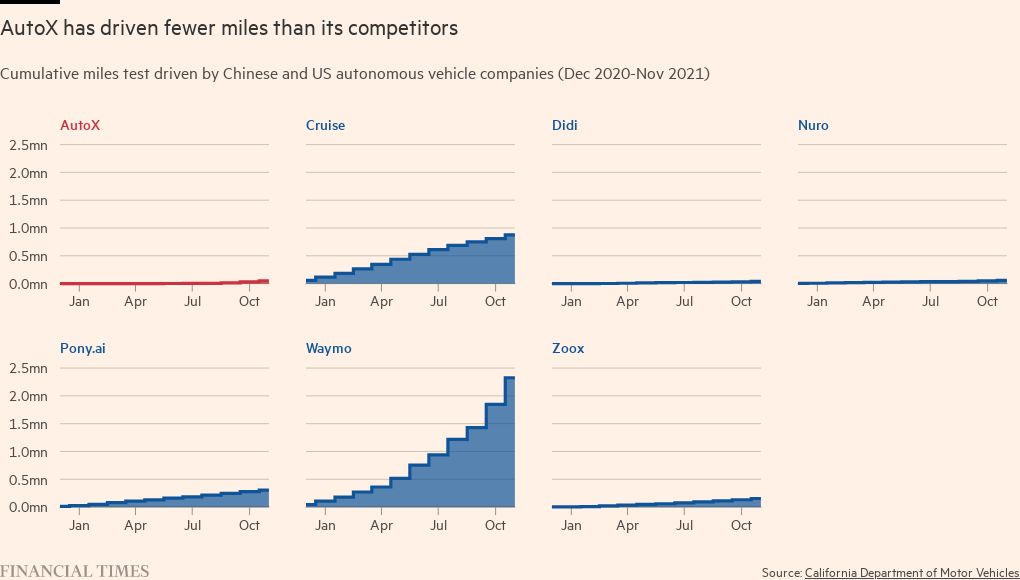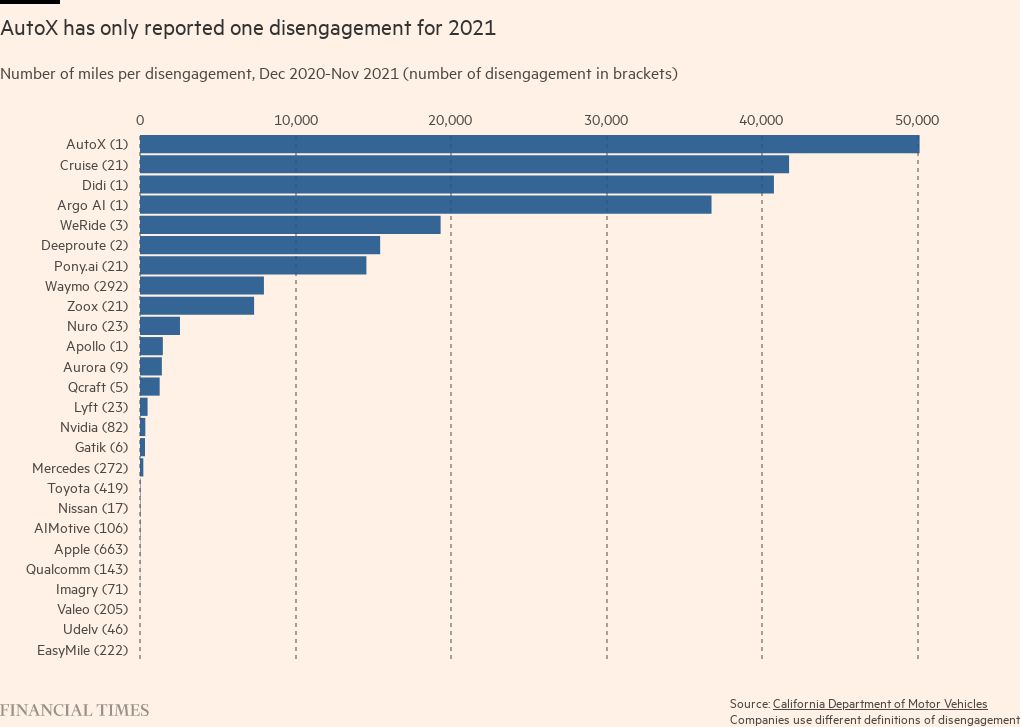Why Chinese driverless car company AutoX disengaged its safety features

Roula Khalaf, Editor of the FT, selects her favourite stories in this weekly newsletter.
In January 2019, a green car made by Chinese company AutoX meandered a few miles through the roads of Las Vegas before arriving at a convention centre hosting the Consumer Electronics Show, an event attended by 175,000 people including blue-chip investors and the world’s media.
The ride was completed in “autonomous mode” with a human in the driver’s seat, though AutoX’s technology controlled the vehicle. The demonstration represented a landmark for the company’s founder Xiao Jianxiong, who brands himself as “Prof X” after the fictional leader of the X-Men in the Marvel Comic series.
Those watching may have been unaware that Xiao had ordered the AutoX car’s brakes, steering wheel, accelerator and red safety button to be disabled, according to people with knowledge of the incident. That decision meant the human driver would have been unable to instantly take control of the car in an emergency.
“The car was rigged so it would not disengage,” said one individual with direct knowledge of the event, whose account was confirmed by another former employee. “It was extremely dangerous, there were thousands of people on the streets that day for the conference. Thankfully nothing happened but someone could have been hurt.”
Xiao wanted to display how well his company stacked up against western rivals in a global race to build autonomous technology. The industry has attracted nearly $330bn investment since 2010, according to McKinsey, with the best-funded groups including Alphabet-owned Waymo, Aurora and General Motors’ Cruise.
Given the need for money to compete, AutoX received a welcome boost three months after the CES demo: a $100mn investment from a consortium that included the Chinese ecommerce group Alibaba and the state-owned carmaker Dongfeng. The following year, Xiao also won a previously undisclosed investment from SoftBank’s Vision Fund. SoftBank declined to comment.
People with knowledge of the incident suggested AutoX considered the moment to be an important publicity stunt and wanted to ensure the demo ride for investors and the media was completed without human intervention. “It was all about the optics with Prof X,” said one former employee.
The episode was indicative of the company’s broader strategies, according to multiple former employees in the US and China, who spoke to the Financial Times on condition of anonymity. They said AutoX executives allowed the cars to operate in ways that put them closer to a potential collision in order to get vital data that would improve its technology. “They really pushed the envelope,” said one member of the operations team.
“Safety was not a top priority at AutoX,” said one person, pointing to how company bosses, including Xiao and Jewel Li, the chief operating officer, also pressured the operations team to test the cars on public roads even if a crucial safety feature had not been wired up or was not working.
They pointed to how AutoX drivers had often gone out on to roads in San Jose, where it is testing its driverless cars, even if the red safety button was not working. Four other team members with direct knowledge of the testing system spoke of the same problem.
AutoX did not respond to detailed questions for comment or make its executives available to discuss this article. But in February, Xiao told the FT in an unrelated interview that safety was his “highest priority”.
Scott Kennedy, an expert on China’s technology innovation at the Center for Strategic and International Studies, said the loosely regulated autonomous vehicles are a “wild west” of players “racing” to be first to market.
Other automotive groups have also been accused of presenting themselves in a flattering image to show off futuristic driverless systems. In December, the New York Times alleged that in 2016 Tesla released a falsified video that showed its partially autonomous technology was more advanced than its tests had proven. Tesla did not respond to a request for comment.
AutoX is much smaller than rivals such as Waymo and Cruise. The company boasts a fleet of 1,000 cars, most of these are in China. Only six of these were driving on the roads of California last year, according to the state’s Department of Motor Vehicle report.
Those six cars drove a total of just over 50,000 miles in 2021. By contrast, Waymo’s 569 cars drove 2.3mn miles and Cruise had 135 cars on the road which drove 876,104 miles.
Other Chinese autonomous driving companies, including AutoX, Didi and Pony.ai have operations in California, a location that is considered the industry gold standard for testing and developing autonomous vehicle technology.
The Californian DMV “disengagement” report has emerged as an unofficial metric for investors to compare the various companies’ technology. “Companies show improvements in technology by demonstrating their cars have driven further in autonomous mode with fewer interventions,” said Kennedy.
In 2021, AutoX topped the charts for the number of miles driven without disengaging. But the company only self-reported one disengagement for the entire 12-month period, compared with 291 by Waymo and 21 by Cruise.
Xiao’s company was spawned in 2016 when he was a computer vision and robotics professor at Princeton University, turning AutoX from an operation founded in the garage in a San Jose residential house into an operation spanning multiple cities in China and the US.
In 2021, AutoX became the first company in China to be given approval to run its cars in fully autonomous mode without a safety driver — a coup for the start-up against rivals including Baidu’s Apollo and Didi which have the backing of the country’s deep-pocketed internet companies.
Xiao has said it is easier to launch self-driving cars in China than in the US because motorists in the country are “not very good drivers” as most “start when they are 35”. He argued that this meant there would be greater acceptance for the mass deployment of autonomous vehicles in the country. “For our self-driving cars, it’s easier to be orders of magnitude better than humans,” he said.
In the push to create workable technology and attract investment, former employees said AutoX put the public at risk. One person said that drivers, before sitting behind the wheel, would jokingly ask colleagues to “pray” for their safe return.
Additional reporting by Peter Campbell in London
This article has been amended to reflect the fact that Waymo’s cars have driven 2.3mn miles.


Comments